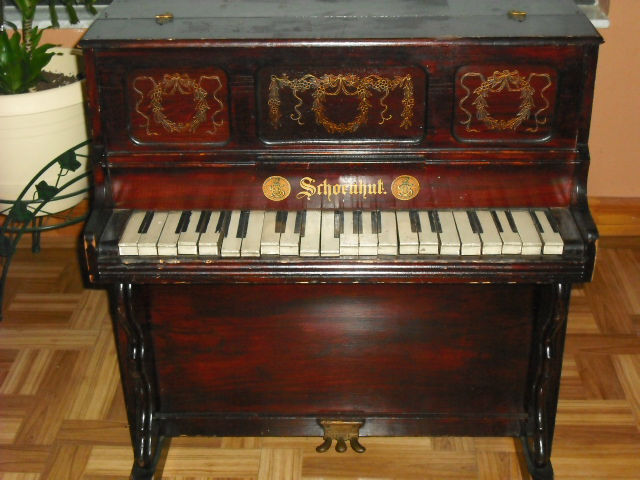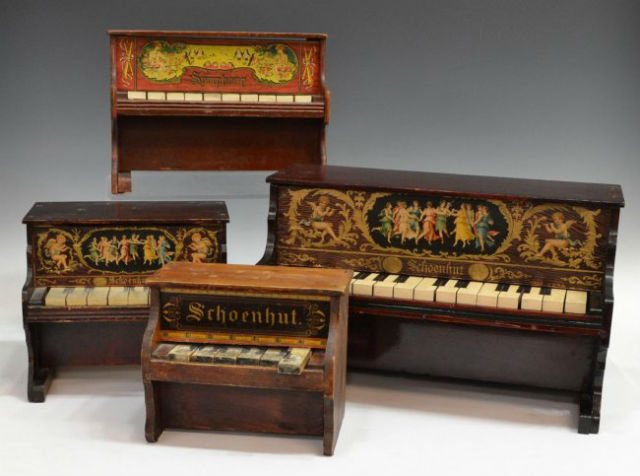Toy pianos originated in Germany during the mid-19th century as toys and musical instruments for young children. Immigrants brought them to North America as part of their personal belongings and, shortly after the Civil War, a United States’ company began manufacturing these toy instruments. They have continued to be not only popular with children but are also recognized in repertoire by composers from classical to pop music.
Albert Schoenhut was born into a toy-making family in Wurtenberg, Germany, in 1848. He learned the trade of making wooden dolls, rocking horses, and other toys as did his father and grandfather, but he also set his sights on crafting toy pianos. These were much more than a child-sized design of a piano. From the beginning, the individual keys had hammers that struck a sounding bar. Each key had a specific pitch. At first, Schoenhut used glass to make sounding bars but later switched to metal, adding to the pianos’ durability.

The toy-maker encouraged children to play his kinderklavier, or child’s keyboard, by including sheet music with each instrument. These pianos were built to stay in tune and came with printed music. The details from the design, painting, size, and position of white and black keys, and tuning, made these toys works of art as well as musical instruments.
As German families immigrated to America, these toy instruments were often included in the possessions they brought with them. However, the pianos did not always survive the journey intact and needed to be repaired. To remedy this, a buyer for Wanamaker’s department store, John Dahl, arranged for Schoenhut to come to Philadelphia in 1866 at the age of 17 to repair the damaged glass sounding bars.
After six years with Wanamaker’s, Schoenhut founded his own company in 1872. The Schoenhut Piano Company made toy pianos and other instruments such as the glockenspiel and xylophone and added traditional toys including dolls and circus figures. It was the first toy company in the U.S. to export its products to Germany.
Following Schoenhut’s death in 1912, this largest American toy company continued under various owners. The toy piano designs took up several pages in the company catalog, ranging from upright to grand pianos and had accompanying piano stools. By 1935, Schoenhut Piano Company had made more than 40 styles and sizes with prices ranging from 50 cents to 25 dollars.
Children were not the only ones playing toy pianos. These small instruments had also captured the interest of well-known composers. Suite for Toy Piano (1948), by John Cage, was the first classical piece written for these little keyboards. The instrument developed a following and was welcomed by other avant-garde musicians and composers including German pianist and composer Bernd Wiesemann and French musician Pascal Comelade. Pianist Margaret Leng Tan has performed the Cage Suite for Toy Piano and other toy piano works for concerts and recordings.
The instrument has also been showcased in other styles of music and media. For example, the 1972 hit, Summer Breeze. by Seals & Croft, uses the toy piano to play a melody. The children’s piano is where the character of Schroeder sits, in the Peanuts comic strip by Charles Schulz, while playing works by Beethoven and other traditional composers.
Though other toy piano companies have come and gone since Schoenhut launched his company in 1872, The Schoenhut Piano Company has remained in business since inception. It continues to offer pianos based on the toy-maker’s original designs as well as offering new styles. The interest in toy pianos has grown so great that an annual Toy Piano Festival in San Diego began in the year 2000. In 2001, the Library of Congress designated a specific category for toy piano music as Toy Piano Scores M15 T69.

